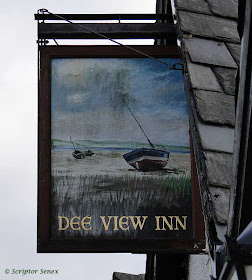A blog about places of interest on the Wirral Peninsula and around the rest of Merseyside in the North West of England.
Tuesday, 20 July 2010
Port Sunlight – housing styles
Port Sunlight is a unique garden village on Merseyside, built in the late 19th Century by William Hesketh Lever (later Viscount Leverhulme) to house his soap factory workers at Lever Brothers which eventually turned into the global giant Unilever. Lever was a philanthropist with a passion for education, charity, industry, art and architecture and Port Sunlight is an enduring testament to the achievements of this remarkable man. The sheer scale of his philanthropy was unprecedented and the whole of Port Sunlight is now a Conservation Area and a major tourist attraction for Wirral. It is said by many to be the finest surviving example of early urban planning in the UK.
The village is set in 130 acres of beautifully maintained parkland with a mature treescape and plenty of floral displays. Approximately 900 houses have been built along with some larger "principal" buildings. Nearly every building in the village is Grade II listed. Lever employed over 30 different architects in the building of the village and the result is an intoxicating mix of architectural styles enhanced by the parkland setting giving tranquil scenes of great beauty.
St Bridget’s, West Kirby - Head-stops
Like many church windows those of St Bridget’s, West Kirby, have decorative hood moulds, or drip stones, projecting above the windows to protect them from rainwater running down the walls. They end in what are generally called label-stops which, when resembling human heads, are often called head-stops.
Sunday, 18 July 2010
Port Sunlight Memorial
This memorial, erected by ‘his fellow workers, is dedicated to William Hesketh First Viscount Leverhulme, founder of Lever Brothers Ltd and of Port Sunlight.
It stands outside the Lady Lever art Gallery in Port Sunlight. For most of his life Dad worked for Lever Brothers or various associated shipping companies.
The wording on the column reads “The figures at the base of the memorial symbolise the three great interests in Viscount Leverhulme’s life; industry, education and charity – in its widest meaning.”
In fact there are four figures – the fourth obviously symbolising his other great interest – art. I wonder if it was added as an afterthought or if the stonemason who inscribed the column was given the wrong instructions?
The figure at the top of the column represents inspiration – the foundation of all human progress.
Brimstage Hall
Standing at what appears to be the geographical centre of Wirral is Brimstage Hall which retains many of its original medieval features. The original hall was built within a fortified area with a moat and embankment and the hall itself dates from between 1175 and 1350, the oldest part being the tower house. The first recorded occupant was Sir Hugh Hulse and his wife Marjorie who were granted the right to build the Chapel on 11th February 1398, but the original structure was already in existence.
Further parts of the hall were added in the 16th and 19th centuries. The courtyard now contains a magnificent willow tree.
The Hall has been converted to house craft shops and businesses in its main courtyard and is seen as an important local landmark.
Sunday, 4 July 2010
Dee View Inn - Lower Heswall
Does exactly what it says on the tin - it's an inn with a view over the Dee!
An Edward VII letter box by the Dee View Inn.
Saturday, 3 July 2010
The Parish Church of St Bridget, West Kirby
The lych gate
It is hard to pinpoint how old St Bridget’s Church is, since it has been altered and added to over many centuries. Though we know that Christians worshipped here at the time of the first Millennium, the earliest parts of the building surviving and visible are the vestry doorway and some of the masonry north wall of the Lady Chapel which are of the early 14th century. For more details see the Church's website.
The tower is mainly 16th century, although built around an earlier core. There is a ring of 8 bells, 4 of them over 200 years old - a skilled team ring for Sunday morning services as well as weddings and other occasions. At one time my brother was a ringer here and he was married at St Bridget's.
There was a major restoration of the church in 1869/1870 by the architects Kelly and Edwards of Chester.


















































